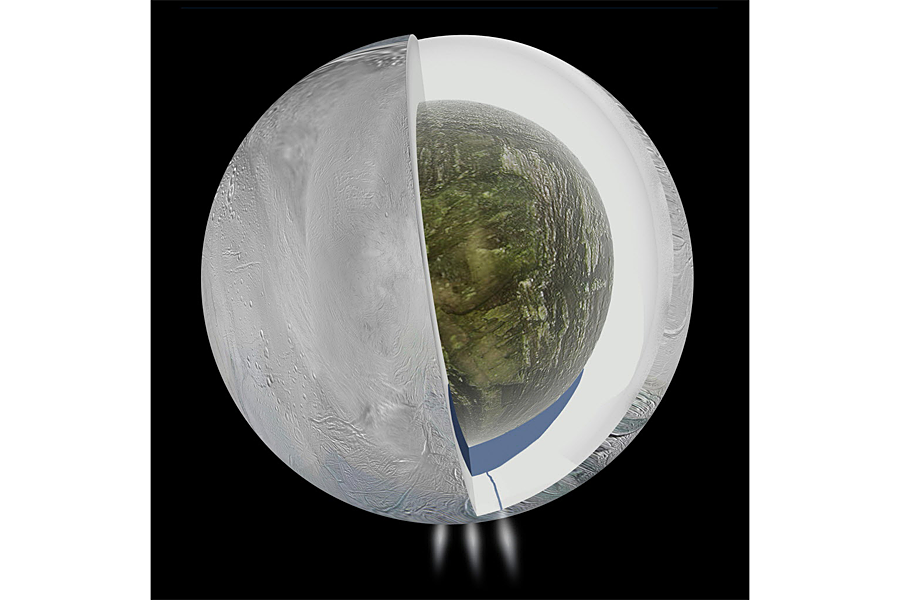Could those 101 geysers on Saturn's icy moon hint at alien life?
Loading...
A NASA probe orbiting Saturn has spotted 101 active geysers on one of the ringed planet's moons.
Cassini, an unmanned spacecraft that has been orbiting Saturn for a decade, has detected 101 distinct active geysers near the south pole of Enceladus, an icy moon with an interior liquid ocean that scientists believe could harbor conditions for alien life.
The liquid water may be exploding to the moon's surface from a deep underground sea, say researchers in an article published in the Astronomical Journal. These geysers appear when water pushes up through large faults in the 19-to-25-mile-thick ice crust.
During its initial series of flybys of the moon in 2005, Cassini first spotted water jetting out of long cracks in the ice. These fractures, dubbed "tiger stripes," are thought to be faults resulting from the flexing of the moon's shape.
Like all moons in our solar system, Enceladus doesn't orbit Saturn in a perfect circle. Instead, it swings around the planet in an ellipse. This means that Saturn's gravitational pull on the moon is different over the course of its orbit, causing it to be squeezed and stretched. These tidal forces pose a problem for Enceladus' rigid, icy crust, and the ice cracks.
At first, some scientists thought the geysers were caused by friction along these moving fractures. They suggested that the rubbing created enough heat to melt the ice. But new research comparing thermal activity maps to the location of the geysers tells a different story.
The scientists found that the thermal hotspots were too small to be the result of friction. But the geyser's heat signatures match the parameters for condensation on the walls of the fractures.
"Once we had these results in hand, we knew right away heat was not causing the geysers, but vice versa," said Carolyn Porco, leader of the Cassini imaging team from the Space Science Institute, in a news release. "It also told us the geysers are not a near-surface phenomenon, but have much deeper roots."
Cassini has actually been able to sample particles in space that had been ejected in the plumes. When the icy grains hit the spacecraft’s detection system, Cassini was able to determine that the geysers shot out salty water.
The presence of liquid water is one of the necessities for life as we know it. Since the since the discovery of the moon's geysers and subsurface ocean, Enceladus has been considered one of the most likely places in our solar system to find microbial alien life.
"Material from Enceladus’ south polar jets contains salty water and organic molecules, the basic chemical ingredients for life," said Linda Spilker, Cassini's project scientist at NASA's Jet Propulsion Laboratory in an earlier news release. "Their discovery expanded our view of the 'habitable zone' within our solar system and in planetary systems of other stars. This new validation that an ocean of water underlies the jets furthers understanding about this intriguing environment."
Saturn’s icy moon was shown to have all the building blocks for life in a 2011 study published in Nature. "It has liquid water, organic carbon, nitrogen [in the form of ammonia], and an energy source," researcher of that study Chris McKay, an astrobiologist with NASA, explained in a news release then. "There is no other environment in the Solar System where we can make all those claims," he said, other than Earth.
Thus, Enceladus was called the "sweetest spot for alien life."








